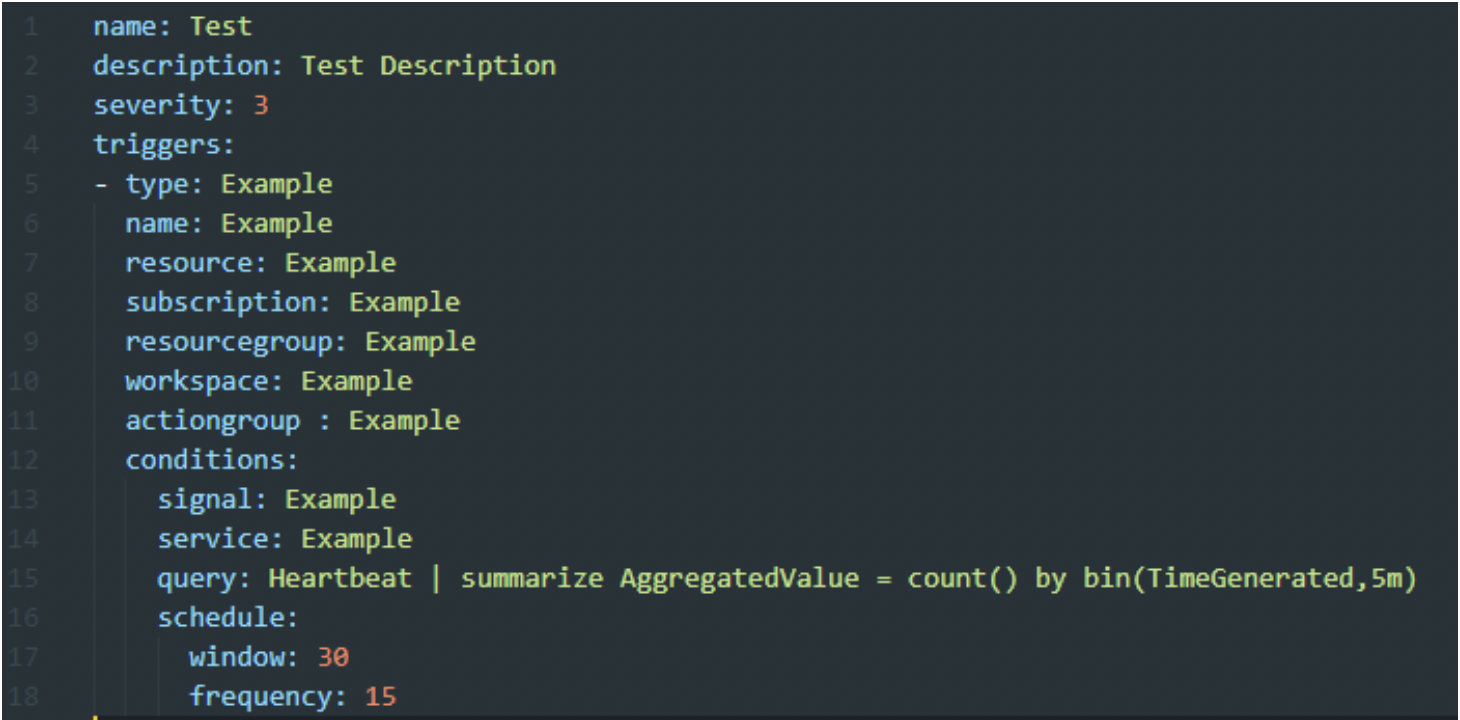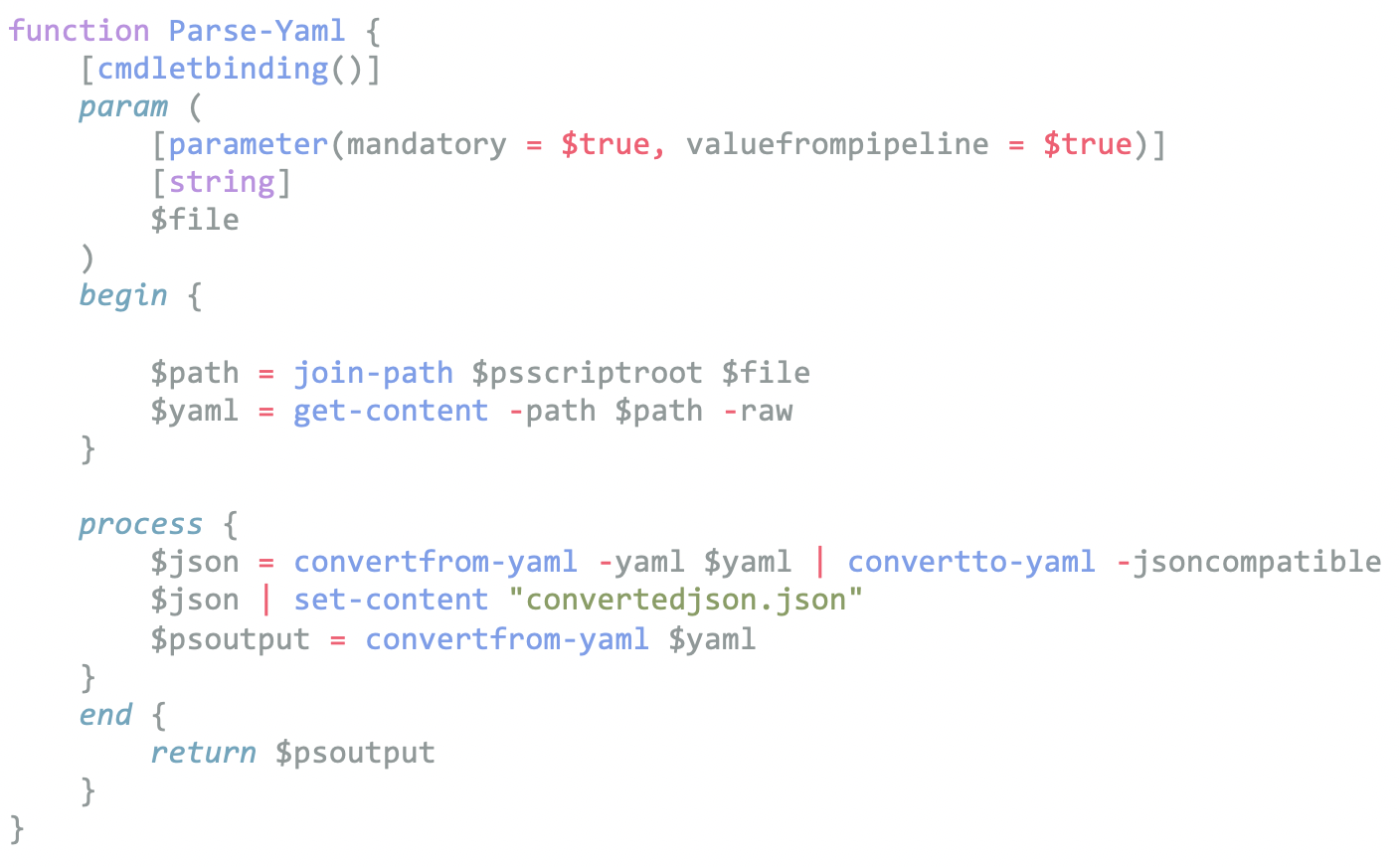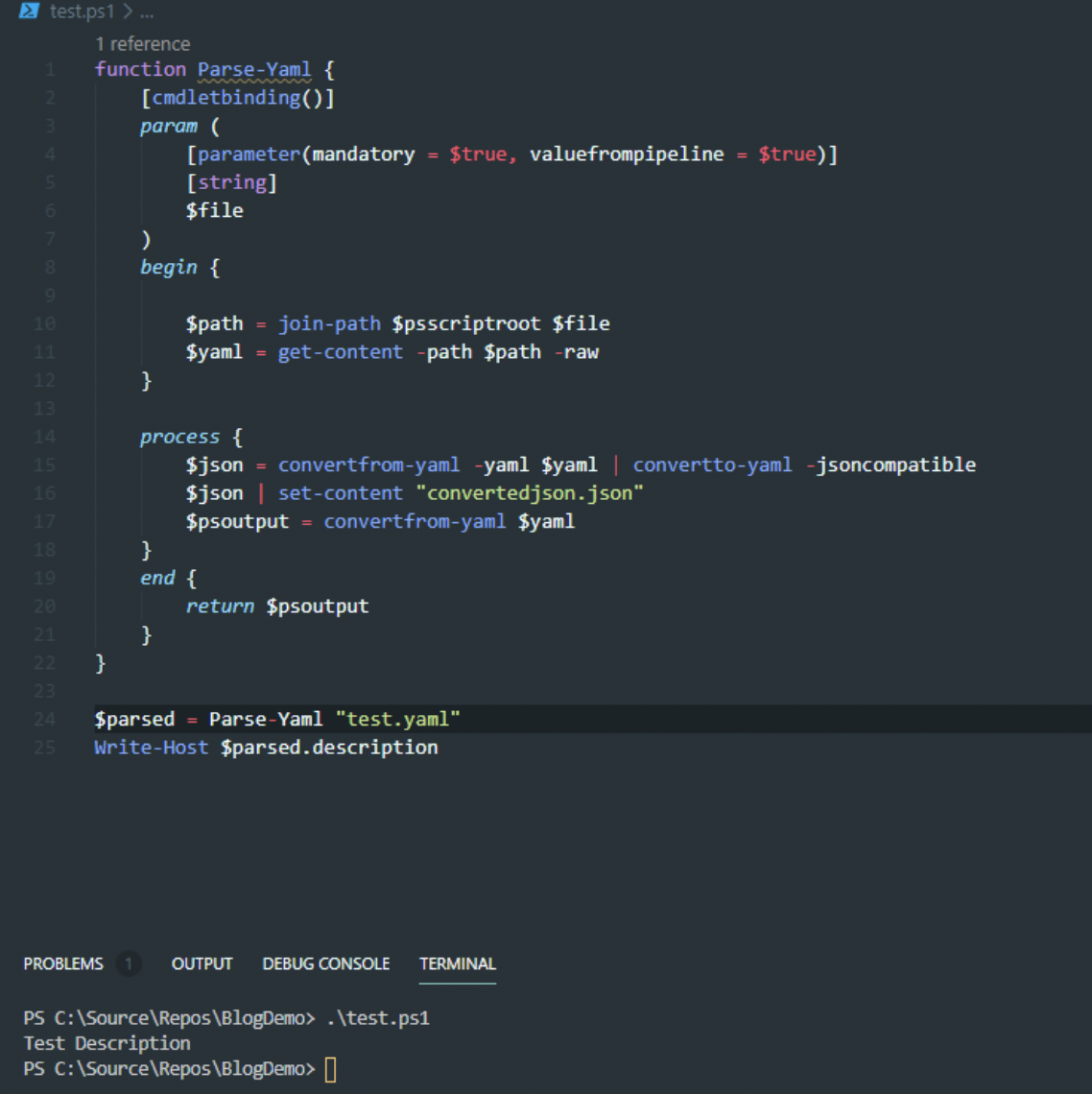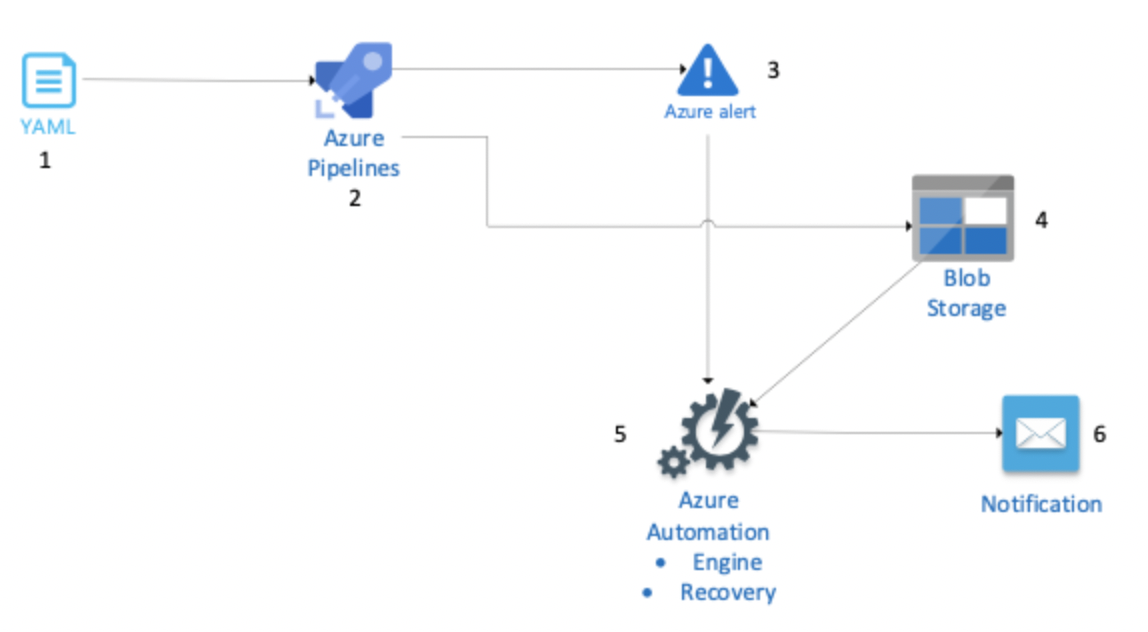During a recent design session at a client site, our team had the opportunity to participate in something cool. We had the opportunity to create a custom DSL (Domain Specific Language) in YAML for an automation framework we wanted to build. This blog will help provide a high-level overview. The client wants to use Azure Automation to create a self-healing framework for their infrastructure. The environment is a mixture of both PaaS and IaaS, with certain VMs being used to host app and database servers. Unfortunately, because of potential performance issues, it is important to regularly perform healing actions on the environment, which so far is being done manually. Now you may be asking, “Why don’t they use something like Chef or Puppet?”. It is because these technologies were either in the process of being on-boarded or were not available. You may also ask, “Well, if you’re going to use Powershell, just use Powershell DSC!”. While I agree that Powershell DSC is powerful and could potentially power the engine for this application (explained below), DSC itself is not very user-friendly. One of the major factors for this session was to allow any user to edit or read the definitions, and YAML is a much more robust option for usability.
The design session itself was fascinating. I had never spent time creating my own configuration language complete with definitions and structure. It was a great learning experience! I had used YAML briefly when demoing out things like Ansible for personal projects, but never directly to solve an issue. YAML had always been another markup language for me. This usage of it, however, showed me the power of the language itself. The problem that we ended up solving with the below snippet was creating an abstraction layer for Azure Monitor Alerts.
After the session completed, we were left with something like this:

Now what?
We must take this YAML File and convert it into an Azure Monitor Alert. The first problem we ran into is that this file is a YAML File. How can I take these configuration values and convert them to be used in Powershell? Here is where Cloudbase’s powershell-yaml module comes into play. As we all know, Powershell was written on top of and created to be an extension for the .NET Framework, so people at Cloudbase created the wonderful powershell-yaml, a module that is a wrapper around the popular .Net Library YamlDotNet.
With powershell-yaml you can create something like this:

In this example, I am not only converting the yaml file into a JSON file as an example, but I am returning the yaml as a PSObject. I find this much easier to use because of the ease of dot notation.
In this case, you can now reference variables such as this:

I was able to follow up with the corresponding PowerShell cmdlets available in the Az Modules and programmatically create Azure Monitor Alerts using YAML.
The eventual implementation will look roughly like this:

Each Azure Alert will trigger a webhook that is received by the Engine that is running in Azure Automation. This Engine will then do all business logic to find out whether the piece of infrastructure in question needs healing. If all the previously defined reasons are true the automation runbook will perform the recovery action.
The exercise itself was eye-opening. It made me much more comfortable with the idea of designing a solution for our specific scenario rather than trying to find out and wait to find the product or framework that would solve the problem for us. Also, this PoC showed me the power of YAML and how it can turn something incredibly monotonous, like configuration values, into something that can be part of your robust solution.






